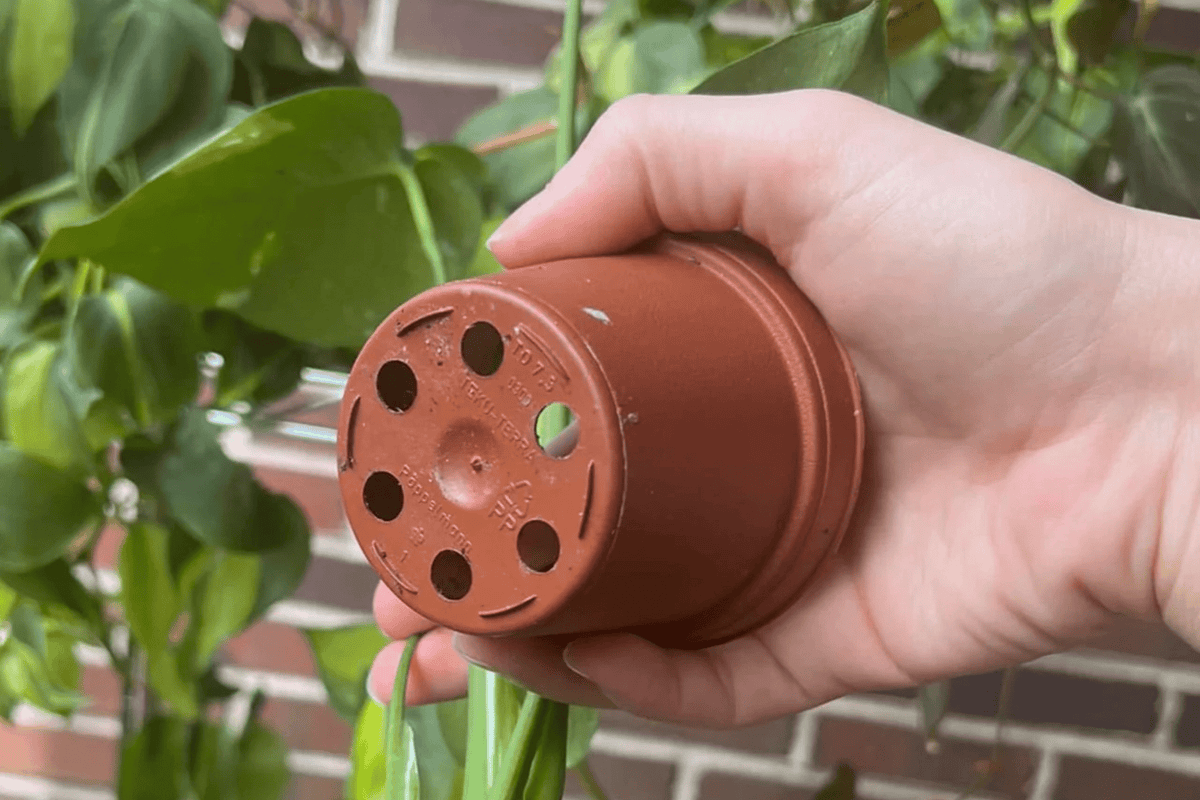
Drainage 101
Read in: 3 min
Read in: 3 min
When it comes to keeping your houseplants happy and healthy, drainage is a crucial factor that often gets overlooked. Proper drainage in plant pots can mean the difference between a thriving indoor jungle and a sad collection of wilting leaves. Let’s dive into why drainage is so important, what can happen if your pots don’t have it, how to choose the right pots, and which plants need drainage the most.
Imagine standing in a puddle with socks on and no way to escape – not very pleasant, right? That’s how your plant feels without proper drainage. When water sits at the bottom of a pot with no way out, it can lead to waterlogged soil. This creates a perfect environment for root rot, a condition where the roots drown, start to decay, and can no longer absorb nutrients or water effectively. Over time, this can cause the plant to wilt, turn yellow, and eventually die.
Without drainage, salts and minerals from water and fertilizers can also build up in the soil, creating an unhealthy environment for your plant. This salt accumulation can burn the roots, causing further damage. Additionally, standing water can become a breeding ground for pests and fungi, which can spread to other plants in your collection. The gist is, poor drainage can lead to a ton of problems that are often fatal for our houseplants!
Choosing the right pot is the first step to ensuring your plants have the drainage they need. Look for pots with many drainage holes at the bottom – this allows excess water to escape and prevents the roots from sitting in water. If you find a pot you love that doesn’t have drainage holes, you can often drill holes yourself, or use it as a decorative outer pot with a plain, well-draining inner pot.
Terracotta and ceramic pots are great options because they are porous and allow moisture to evaporate from the sides. However, make sure they still have drainage holes at the bottom. Plastic pots are also good as they are lightweight and often come with pre-drilled holes. For a stylish touch, consider using a pot with a built-in tray to catch excess water.
When selecting a pot, size matters too. A pot that’s too big can hold too much moisture, while one that’s too small can restrict root growth and dry out too quickly. Aim for a pot that’s just a bit larger than the plant’s root ball to allow for healthy growth and proper drainage.
Check out Plant Pots 101 for some more tips on selecting pots! 🪴
While all plants benefit from good drainage, some are particularly sensitive to waterlogged conditions. Succulents and cacti, for example, are adapted to arid environments and require well-draining soil to prevent rot. These plants store water in their leaves and stems, so they need pots with excellent drainage to avoid retaining excess moisture.
Tropical plants like Orchids, Monsteras, and Philodendrons also need good drainage to mimic their natural habitats, where water flows freely through the soil or substrate. Even though these plants enjoy humidity, their roots still need air and should not sit in soggy soil.
Once you’ve selected the right pots, maintaining proper drainage involves a few ongoing practices. Always check the soil before watering – if the top few inches are dry, it’s usually time to water. However, for plants that prefer drier conditions, like Monsteras, let the soil dry out more thoroughly between waterings.
When watering, make sure to do so thoroughly until water runs out of the drainage holes. This helps to flush out any accumulated salts and ensures that the water reaches the roots. Avoid letting plants sit in standing water by emptying saucers or trays after watering.
It’s also a good idea to use a well-draining potting mix. (Dirt Bag, anyone?) Regularly check the drainage holes for blockages and clear them if necessary to maintain good drainage.
Proper drainage is fundamental to the health of your houseplants. By understanding the importance of drainage, selecting the right pots, and maintaining good practices, you can prevent many common plant issues and help your green friends thrive.
Remember, a well-drained plant is a happy plant – and a happy plant makes for a happier, greener home. So, next time you’re potting up a new plant or repotting an old friend, make drainage a priority and watch your indoor garden flourish.